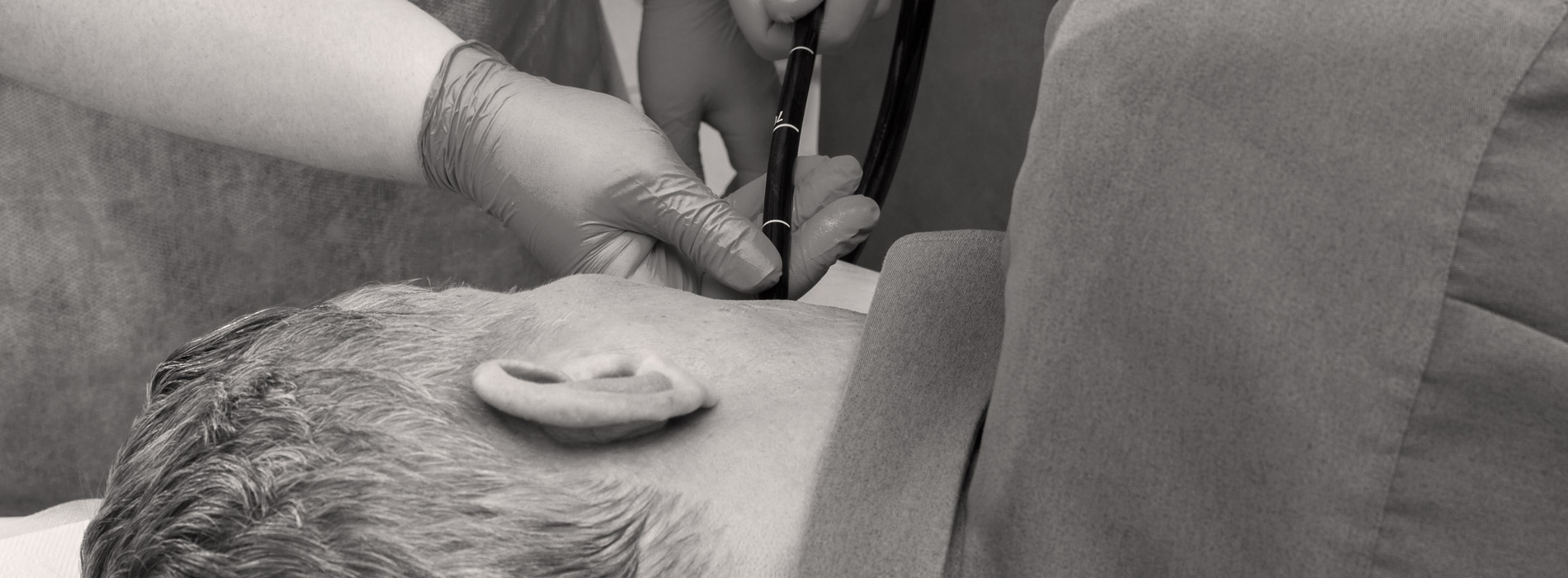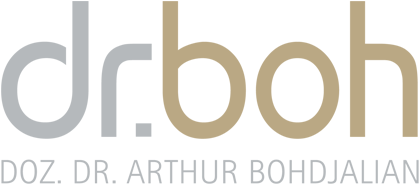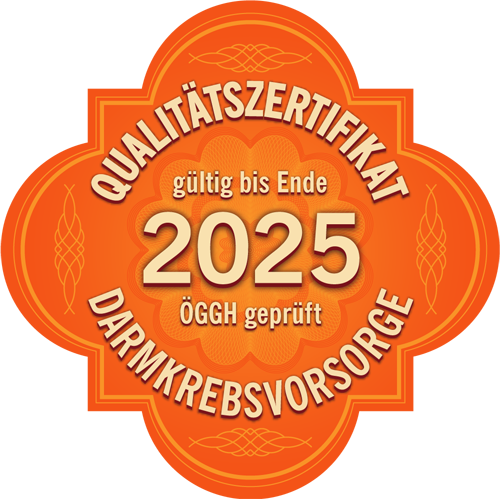GASTROSCOPYControl and prevention in Vienna

Gastroscopy is used to study symptoms on the esophagus, stomach or duodenum, ulcer diagnosis and cancer prevention. A scope (gastroscope) of approx. 5 mm width with a light source and a camera is advanced through the throat.
The camera images are reproduced on a monitor. This procedure allows us an accurate diagnosis to clarify gastro-esophageal symptoms or cancer prevention.
Gastroscopy is often performed as an out-patient treatment. No food should be taken 6 hours prior to the procedure. The procedure itself is painless, but may be easier with sedation or with a short anesthetic.
| Short information | |
|---|---|
| Duration of procedure | approx. 10-15 minutes |
| Anesthesia | Sedation or short acting anesthetic possible |
| Method | Gastroscopy |
| Sports possible | After 24 hours if sedation is used |
Questions and answers on gastroscopy
We do a gastroscopy if certain gastric/intestinal symptoms have to be clarified.
The procedure is done on an empty stomach. To enable an accurate diagnosis, the region of inspection should not contain ingested food. That is achieved with a fast of 6 – 8 hours prior to the procedure.
No. Gastroscopy may be unpleasant but generally involves little or no pain.
If your throat has been anesthetized, you should neither eat nor drink for some hours after the procedure. Local anesthesia of the throat may involve a larger risk of choking.
If no sedation was used, sport activities can be resumed upon leaving the office. If you were given sedation, you should give your body a little rest that day.
You have questions or require a consultation
on gastroscopy?
We are looking forward to your call. Please call +43-1-890 40 41 orcomplete our contact form.


